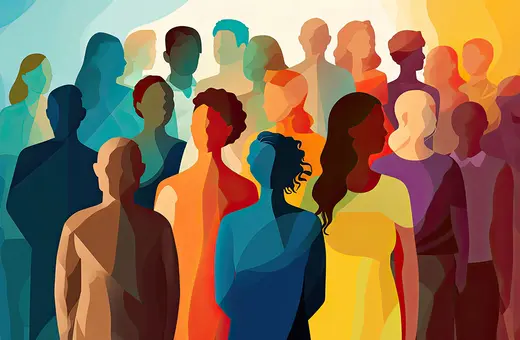The male gaze is objectifying, reductive, and dominates our visual culture. So, the antidote must be balancing it out with a new emphasis on the female gaze, right? Wrong. The way the female gaze has been conceptualized still propagates the usual stereotypes about female identity. What was meant to act as a liberation from the male gaze turns out to be a different limiting view of women. Moving away from the male gaze then isn’t simply a matter of replacing it with the female gaze, but overcoming the idea of gendered gaze altogether, argues Emma Syea.
We know what the male gaze is. It pervades our visual culture, objectifying, reducing, and simplifying women – an expression and reinforcement of an unequal power dynamic in a patriarchal society. We know, in other words, that the reign of the male gaze is over. Time to make way for the female gaze.
The female gaze may be a hot ticket but it remains something of a mystery, with some even doubting its existence. While the literature on the male gaze is well-established (think John Berger’s Ways of Seeing and Laura Mulvey’s “Visual Pleasure and Narrative Cinema”), the relatively new concept of the female gaze is under-defined. Critics often rest content with giving a negative definition of the female gaze, telling us what it doesn’t do, namely seek to subordinate or objectify.
With that in mind, the female gaze is instead understood as an empathetic, sensitive, thoughtful gaze, depicting women as fully-realised individuals with complex inner lives. Writer and director Joey Soloway suggests that part of the role of the female gaze is to depict what it feels like to be the object of the gaze and to defiantly return that gaze. One thing we do know then is that when it comes to the representation of women, the female gaze is supposed to fill the lacunae left behind by the male gaze and to right its wrongs.
___
By stressing that a female gaze deals in emotions rather than actions, it seems we are in danger of falling back into the trap of the male gaze.
___
So far, so nobly intentioned. But doesn’t this idea of a female gaze that is inherently empathetic sound a bit too familiar? The idea that women are ‘better’ at emotions, that they are more sensitive, compassionate, and caring has long been propagated as a gender stereotype - and one which historically has ensured that women have been limited to the roles of nurturers, supporters, and facilitators. This is the same stereotype which brands women displaying emotions outside of that selection of benevolent emotions as ‘ice-queens’, ‘psychos’, or ‘hysterical’. It places an onus on women to be a certain way and to appear somehow deficient if those feelings are lacking. By stressing that a female gaze deals in (a set range of) emotions rather than actions, it seems we are in danger of falling back into the trap of the male gaze.
And then there is the issue of how a female gaze tackles objectification. Typically seen as a facet of the male gaze, objectification is part and parcel of the hyper-sexualisation of women, and as such, is taken to be morally problematic. To focus on bodies as objects rather than as seats of thoughts, feelings, attitudes, and beliefs is seen as a necessarily negative phenomenon.





















Join the conversation